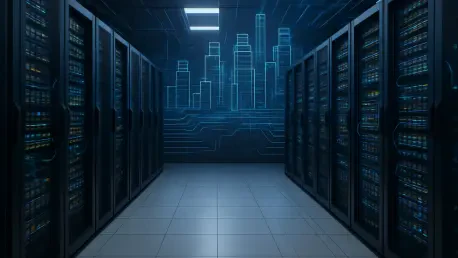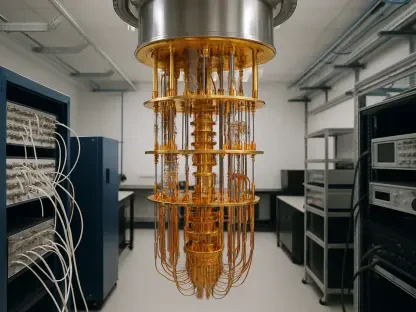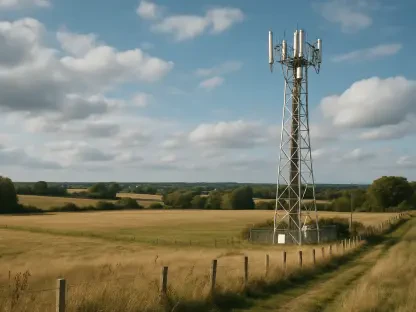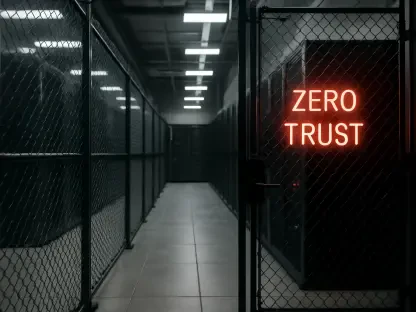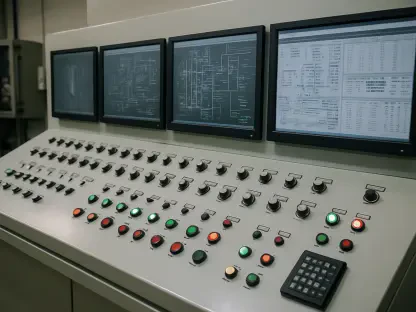In an era where digital infrastructure underpins nearly every aspect of modern life, data centers stand as the critical engines driving cloud computing, artificial intelligence, and countless other technologies, yet they consume a staggering amount of energy, accounting for roughly 3% of global electricity usage. This immense power demand poses a dual challenge: escalating operational costs for businesses and a significant environmental footprint that cannot be ignored. As the appetite for computing power grows unabated, the urgency to curb energy consumption while maintaining performance has never been more pressing. Fortunately, the industry is witnessing a wave of innovation, from groundbreaking cooling methods to smarter power management, offering viable paths to sustainability. This article explores the most effective strategies and technologies that data centers can adopt to slash energy use, reduce costs, and contribute to a greener future, ensuring they remain the backbone of the digital world without draining global resources.
Revolutionizing Cooling for Lower Energy Use
Data centers have long grappled with the energy-intensive nature of cooling systems, which are essential to prevent overheating but often rely on inefficient, traditional air-based methods that consume significant power. A shift toward cutting-edge alternatives is proving transformative, with technologies like direct-to-chip cooling and liquid immersion cooling leading the charge. These methods target heat dissipation with remarkable precision, drastically cutting energy needs. Notably, liquid immersion cooling can achieve reductions of up to 95% compared to conventional systems, showcasing the potential for massive savings. By moving away from outdated approaches, data centers can not only lower their electricity bills but also take a significant step toward reducing their overall environmental impact, aligning operational needs with ecological responsibility in a way that benefits both the bottom line and the planet.
Beyond the adoption of specific cooling technologies, the broader implications of these advancements are reshaping how data centers are designed and operated. Hybrid cooling systems, which combine elements of liquid and air cooling, offer a flexible solution tailored to varying workloads and climates, ensuring efficiency without compromising reliability. The transition to such innovative systems often requires upfront investment, but the long-term payoff in energy savings and reduced maintenance costs is substantial. Additionally, these technologies enable data centers to operate at higher densities, accommodating more computing power in less space while keeping energy consumption in check. This evolution in cooling practices represents a cornerstone of modern data center strategy, addressing one of the most significant sources of power usage with solutions that are both practical and forward-thinking.
Powering the Future with Renewable Energy
Another pivotal strategy for enhancing energy efficiency lies in transitioning data centers to renewable energy sources such as solar and wind, which offer a cleaner alternative to fossil fuels. Power purchase agreements (PPAs) have emerged as a powerful tool in this shift, allowing facilities to secure sustainable energy at competitive rates over extended periods, thus ensuring stability in both cost and supply. Furthermore, outsourcing operations to locations or providers that prioritize renewable energy infrastructure provides a practical option for companies looking to reduce their carbon footprint without overhauling existing facilities. This approach not only diminishes reliance on non-renewable resources but also supports global efforts toward carbon neutrality, positioning data centers as leaders in environmental stewardship while maintaining economic viability.
The integration of renewable energy into data center operations also reflects a broader industry commitment to sustainability goals like net zero emissions. Many organizations are aligning their strategies with science-based targets, ensuring that their energy sourcing decisions contribute to measurable reductions in greenhouse gas emissions. This trend is bolstered by advancements in energy storage technologies, which help balance the intermittent nature of renewable sources, ensuring a steady power supply even during periods of low generation. By embracing these solutions, data centers can mitigate the environmental challenges associated with their high energy demands, setting a precedent for other industries to follow. The move toward renewables is not just a technical shift but a cultural one, signaling a dedication to long-term ecological balance alongside operational excellence.
Optimizing with Artificial Intelligence and Machine Learning
Artificial intelligence (AI) and machine learning (ML) are rapidly becoming indispensable in the quest for energy efficiency within data centers, offering sophisticated tools to manage power consumption with unprecedented precision. These technologies enable predictive analytics that forecast energy requirements based on historical data and real-time usage patterns, allowing for proactive adjustments to cooling and resource allocation. AI-driven power management systems enhance the stability of electrical grids by optimizing load distribution, reducing the risk of outages while minimizing dependence on traditional energy sources. This data-driven approach ensures that energy is used only where and when it is needed, paving the way for significant reductions in waste and operational costs across facilities of all sizes.
In addition to predictive capabilities, machine learning algorithms excel at identifying inefficiencies, such as underutilized servers or overcooled areas, enabling data centers to fine-tune their operations dynamically. These systems adapt to changing conditions, such as fluctuating workloads or seasonal temperature variations, ensuring that energy usage remains optimized at all times. The implementation of AI and ML also facilitates smarter decision-making by providing actionable insights into long-term energy trends, helping managers plan upgrades or expansions with efficiency in mind. As these technologies continue to evolve, their integration into data center operations is becoming a hallmark of innovation, offering a scalable solution to the complex challenge of balancing high performance with low energy consumption in an increasingly digital world.
Implementing Diverse Energy-Saving Strategies
Beyond cooling and power sourcing, data centers can explore a variety of additional tactics to enhance energy efficiency, such as thermal energy storage, evaporative cooling, and waste heat recovery, all of which focus on repurposing energy or balancing cooling loads to minimize waste. Thermal storage, for instance, captures excess heat during low-demand periods for use during peak times, while waste heat recovery systems redirect energy to other processes, reducing overall consumption. Complementing these efforts, the adoption of energy-efficient hardware and software, alongside virtualization techniques that consolidate workloads onto fewer servers, further drives down power needs. These combined strategies create a multifaceted approach to energy management that maximizes savings without sacrificing performance.
Regular upgrades to newer, more efficient technologies also play a crucial role in sustaining energy reductions over time, as older equipment often consumes more power than necessary. Virtualization, in particular, allows data centers to optimize resource use by running multiple virtual machines on a single physical server, cutting down on idle hardware and its associated energy costs. Meanwhile, evaporative cooling leverages natural processes to lower temperatures with minimal electricity, offering a cost-effective alternative in suitable climates. Together, these methods demonstrate that energy efficiency is not a one-size-fits-all endeavor but rather a tapestry of solutions that can be tailored to specific operational needs, ensuring that data centers remain agile and sustainable in a rapidly evolving technological landscape.
Driving a Sustainable Industry Transformation
A clear trend sweeping through the data center industry is the unified push toward sustainability, fueled by the realization that traditional practices are no longer viable in the face of escalating energy demands and environmental concerns. There is broad consensus that a blend of advanced cooling technologies, renewable energy adoption, and intelligent systems like AI represents the path forward. Strategic partnerships, such as those facilitating access to clean energy through PPAs, alongside strict adherence to emissions reduction standards, are increasingly viewed as essential components of responsible data center management. This collective shift underscores a new era where operational efficiency and environmental accountability go hand in hand, reshaping industry priorities.
This transformation is not merely about adopting individual innovations but about fostering a holistic approach that integrates diverse solutions into a cohesive strategy. The industry’s commitment to sustainability is evident in the growing number of companies setting ambitious goals for carbon neutrality and investing in technologies that support these targets. As data centers continue to evolve, their role as stewards of digital infrastructure comes with a responsibility to lead by example, demonstrating that high performance and low environmental impact are not mutually exclusive. This ongoing movement toward greener practices signals a profound change, ensuring that the backbone of the digital economy operates in harmony with global efforts to protect natural resources for future generations.
